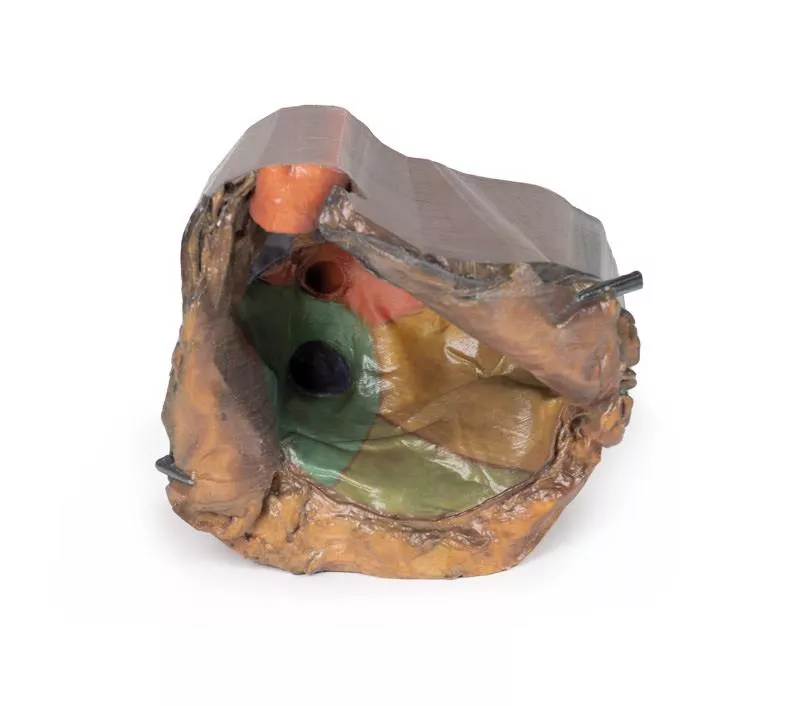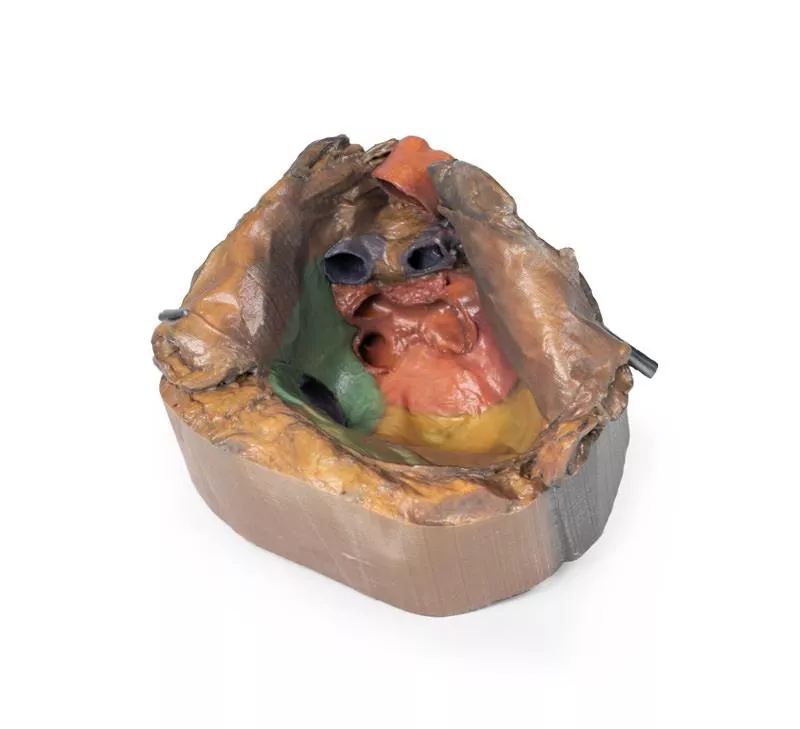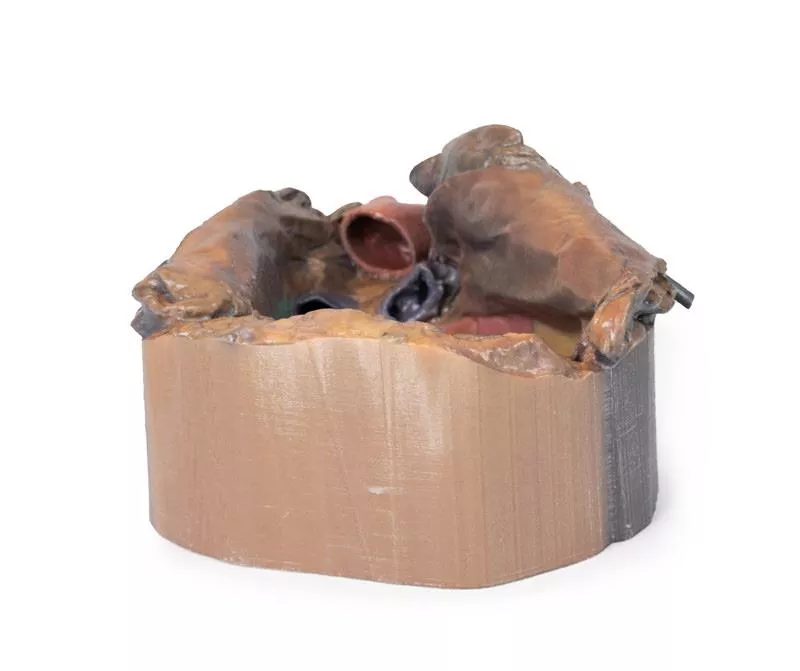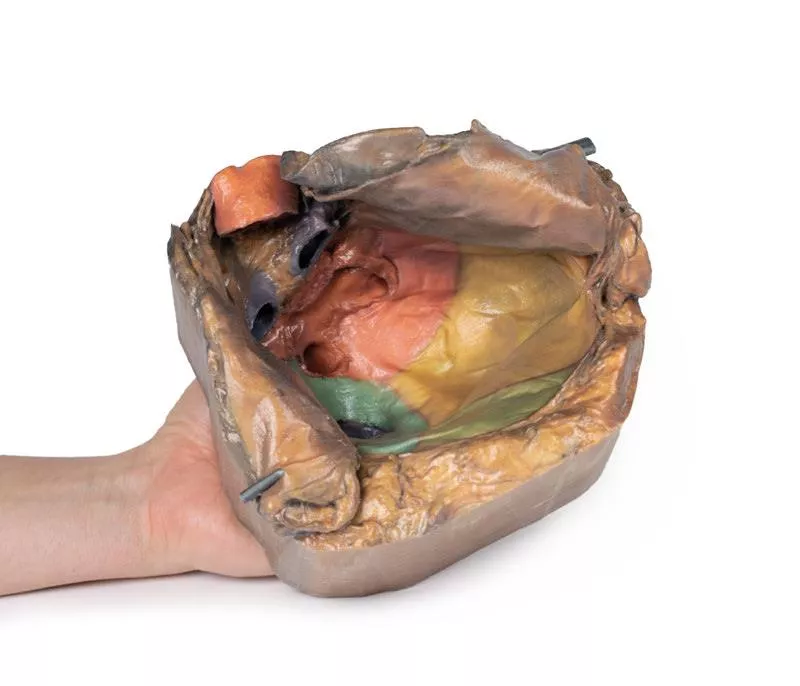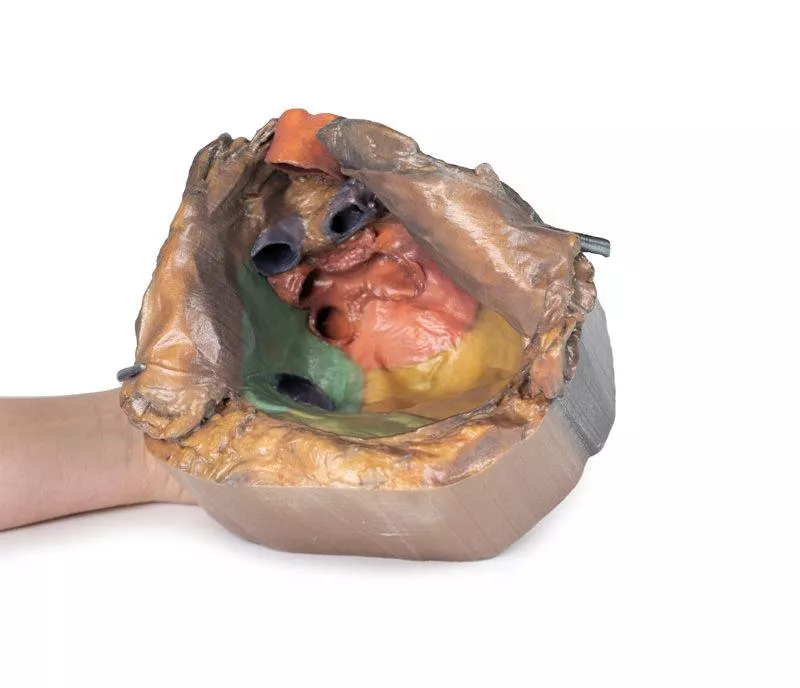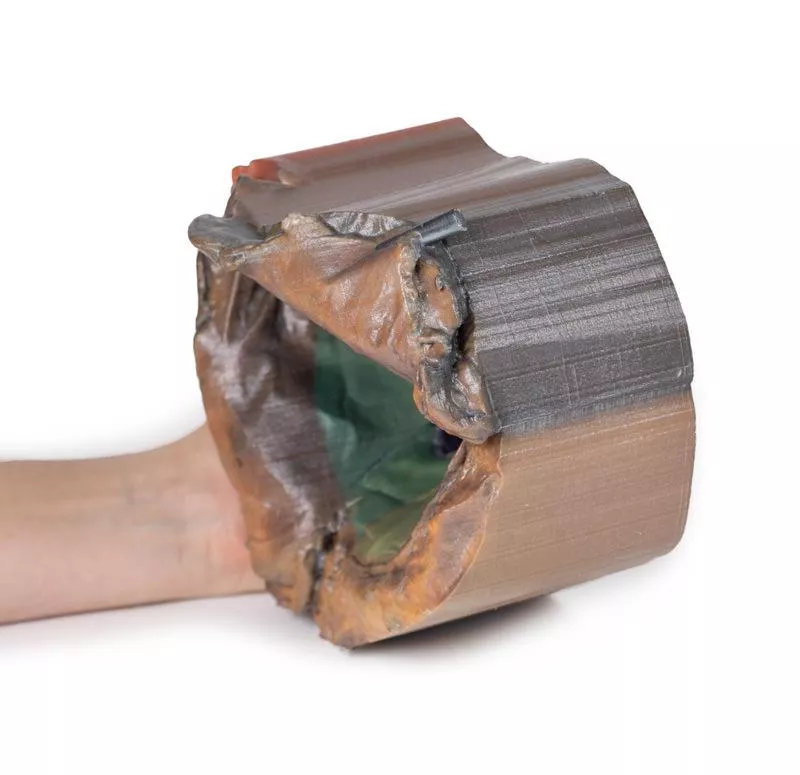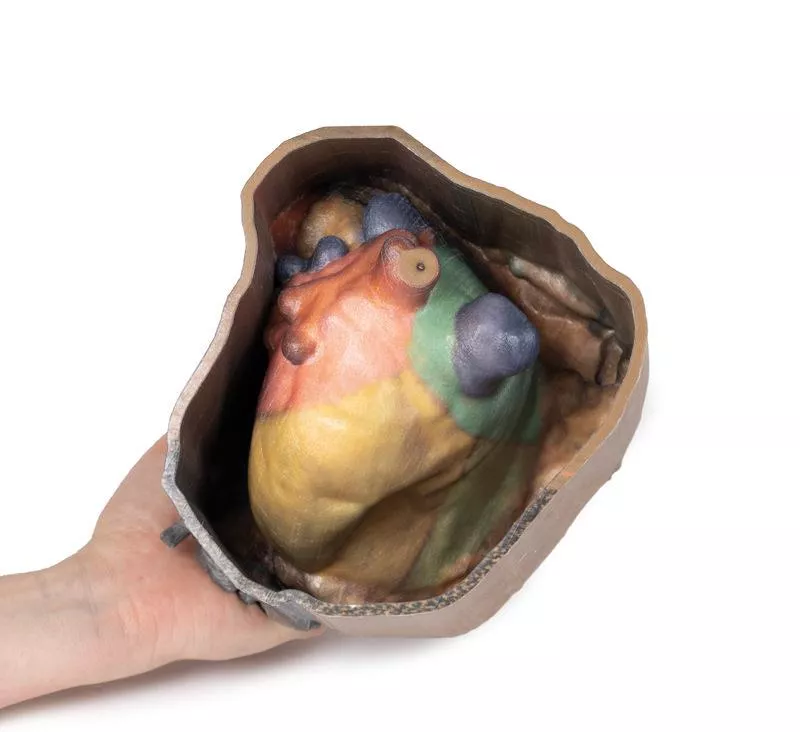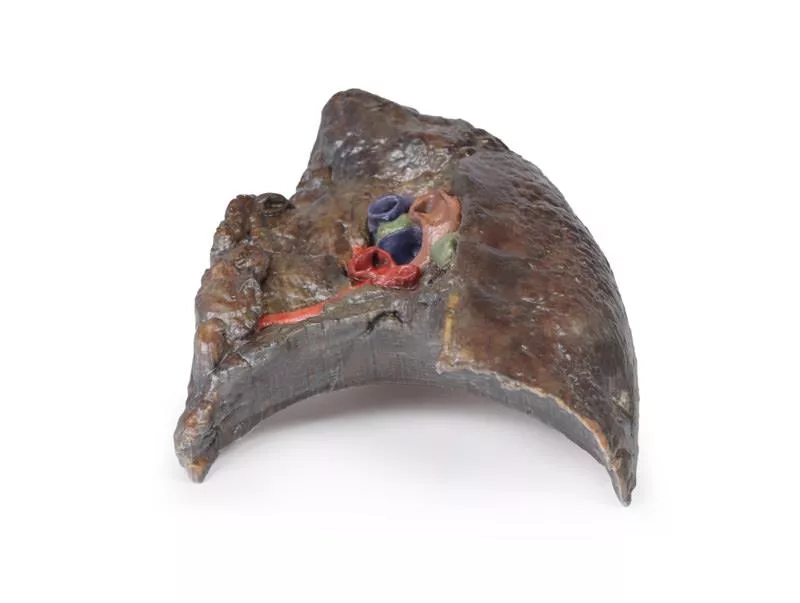Product information "Pericardial space"
This detailed 3D anatomical model displays the pericardial cavity and reflections with the heart removed, allowing clear visualization of key structures within the middle mediastinum.
Key Features:
Pericardium:
Shows the full extent of the parietal pericardium, continuous with the visceral layer (epicardium), and false-colored to indicate the positions of the atria, ventricles, and great vessels.
Mediastinal Landmarks:
Highlights the base, apex, diaphragmatic, and pulmonary surfaces of the heart by their impressions within the pericardial cavity.
Great Vessels:
- Aorta (ascending, arch, and descending)
- Superior and Inferior Vena Cava
- Pulmonary trunk and arteries
- Pulmonary veins (4 total) - All shown in their natural positions relative to the pericardium.
Pericardial Sinuses:
- Transverse sinus: Located between arteries and veins; relevant for surgical access.
- Oblique sinus: Posterior recess between pulmonary veins.
Educational Use:
- Ideal for teaching thoracic and cardiac anatomy, including pericardial reflections, mediastinal relationships, and surgical landmarks.
- Useful in medical training, surgical planning, and radiological orientation.
Key Features:
Pericardium:
Shows the full extent of the parietal pericardium, continuous with the visceral layer (epicardium), and false-colored to indicate the positions of the atria, ventricles, and great vessels.
Mediastinal Landmarks:
Highlights the base, apex, diaphragmatic, and pulmonary surfaces of the heart by their impressions within the pericardial cavity.
Great Vessels:
- Aorta (ascending, arch, and descending)
- Superior and Inferior Vena Cava
- Pulmonary trunk and arteries
- Pulmonary veins (4 total) - All shown in their natural positions relative to the pericardium.
Pericardial Sinuses:
- Transverse sinus: Located between arteries and veins; relevant for surgical access.
- Oblique sinus: Posterior recess between pulmonary veins.
Educational Use:
- Ideal for teaching thoracic and cardiac anatomy, including pericardial reflections, mediastinal relationships, and surgical landmarks.
- Useful in medical training, surgical planning, and radiological orientation.
Erler-Zimmer
Erler-Zimmer GmbH & Co.KG
Hauptstrasse 27
77886 Lauf
Germany
info@erler-zimmer.de
Achtung! Medizinisches Ausbildungsmaterial, kein Spielzeug. Nicht geeignet für Personen unter 14 Jahren.
Attention! Medical training material, not a toy. Not suitable for persons under 14 years of age.



















